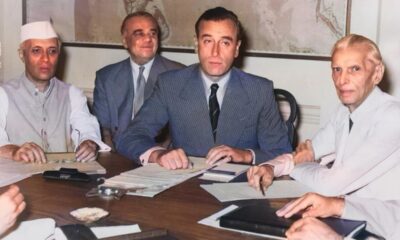As the world races to embrace Artificial Intelligence (AI) with soaring expectations and apocalyptic fears, one of India’s most influential technocrats, Nandan Nilekani, has issued a rare and necessary caution. At the Carnegie India Global Tech Summit, the Infosys Co-Founder—who architected India’s digital identity revolution—warned against inflated hopes and simplistic narratives surrounding AI. His message was clear: AI is not a magic wand, but a tool. One that should complement human intelligence—not replace it—and must be implemented thoughtfully, especially in enterprise and public systems.
Nilekani’s remarks resonate far beyond India. They offer a vital perspective at a moment when Western discourse on AI is oscillating wildly between utopian dreams of productivity explosions and dystopian fears of job loss and social collapse. But between those extremes lies the harder, less glamorous work of real-world AI implementation—where India may have a strategic edge.
Despite not being a global frontrunner in foundational AI research, India has spent the last decade quietly building the backbone for scalable digital governance. The Aadhaar digital ID system, UPI’s revolutionary mobile payment network, and now ONDC (Open Network for Digital Commerce) are examples of India’s public digital infrastructure designed for scale, inclusion, and interoperability. This makes the country uniquely positioned to develop “AI-first systems” not as retrofits, but as original architectures suited to its socio-economic realities.
Nilekani’s emphasis on practical use-cases is not a retreat from ambition but a redirection of it. He points out that building more Large Language Models (LLMs) shouldn’t be India’s only goal. Instead, the country should focus on AI solutions that solve Indian problems: crop advisory tools for farmers, real-time translation for multilingual governance, or AI assistants for frontline health workers. These are not just use-cases—they’re nation-building technologies.
Contrast that with the current trend in Silicon Valley, where the race to build ever-larger models often overshadows questions of usability, fairness, and purpose. Yes, OpenAI and Google may push the boundaries of what is technically possible, but the question Nilekani forces us to ask is: Are we solving the right problems?
The enterprise adoption challenge he outlines is also particularly salient. While consumers can experiment with AI tools casually, organizations—from hospitals to schools to bureaucracies—require robust, transparent, and ethical systems that can integrate with legacy workflows. The West is discovering this the hard way as it attempts to graft AI into institutions built for the 20th century. India, by contrast, has the opportunity to design bottom-up systems for the 21st century.
His most powerful idea, however, is philosophical: AI should not diminish human agency but expand it. This calls for a new model of technological citizenship—one where humans are not passive recipients of algorithmic decisions but active participants, aided by machines.
Nilekani’s voice matters not just because of his past achievements, but because of his clarity of thought in an age of digital confusion. As AI enters the next phase of global transformation, the world would do well to listen—not just to its loudest evangelists or harshest critics, but to those who understand the infrastructure of inclusion. The AI future isn’t just about what machines can do. It’s about what societies choose to build with them.
India may not lead the AI arms race. But if it can lead in building responsible, scalable, and human-centric applications of AI, it might just show the world how to turn hype into hope.

 Culture & Society2 months ago
Culture & Society2 months ago
 Culture & Society2 months ago
Culture & Society2 months ago
 Tech1 month ago
Tech1 month ago
 Opinion2 months ago
Opinion2 months ago
 Business2 months ago
Business2 months ago
 Culture & Society2 months ago
Culture & Society2 months ago
 Culture & Society2 months ago
Culture & Society2 months ago
 iNational Indic2 months ago
iNational Indic2 months ago















